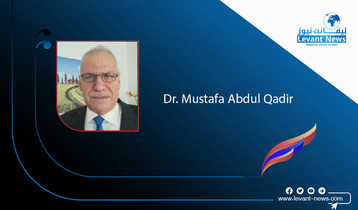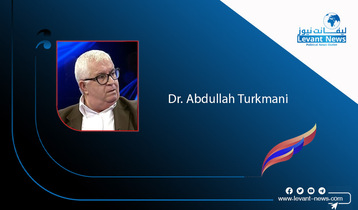-
Trump’s ‘deal’ has made things even worse than they were

Mahmoud Abbas, the Palestinian president, and Ehud Olmert, Israel’s former prime minister, are due to meet at the United Nations in New York in the coming days to express their joint opposition to President Donald Trump’s controversial “deal of the century” to bring about an end to the world’s most intractable and divisive conflict.
The Trump plan, unveiled in the White House on January 28, has been widely condemned as likely to worsen relations between Israelis and Palestinians. It calls for the annexation by Israel of the Jordan Valley, the application of Israeli law to the settlements it has built since 1967 and for a Palestinian state broken up into disconnected enclaves – Bantustans - with its capital in the dreary East Jerusalem suburb of Abu Dis.
That Palestinian “state” in the West Bank – inverted commas are necessary to underline how meaningless the term is – will be connected to the Gaza Strip by a tunnel. Its truncated territory will be compensated for partially by Israeli ceding agricultural land in the Negev desert south of Gaza. The “state” will be demilitarized and Israel will continue to control its external borders, airspace and territorial waters. Hamas in Gaza must disarm.
And that is not all! The Palestinians will be required to recognise Israel formally as a Jewish state and curb payments to the families of martyrs and prisoners. In addition, Palestinian citizens of Israel (adjoining the West Bank) may be pressured to move to the new “state.” No refugees will be permitted to return to homes and land that were lost in the Nakba of 1948, even symbolically.
Trump’s deal, prepared by his son-in-law Jared Kushner, reads like a fantasy wish list of the Israeli right. (Kushner’s boast that he had read 25 books on the conflict did not convince anyone that he had any idea what he was talking about.) The president clearly saw it as a helpful distraction from his impeachment proceedings (shortly before his acquittal) and allowing him to boast to his Christian Evangelical supporters that he had done so much for Israel.
Binyamin Netanyahu, the first Israeli prime minister to face corruption charges while in office, who beamed with undisguised pleasure during the White House event, may be protected and boosted by his moment of glory. Whether he will win the country’s third election in early March (after two inconclusive ones last year) is hard to predict.
Reactions have been understandably angry, but it is important to place the plan in historical perspective. Trump’s deal was launched nearly six years after the last peace talks between the two sides. In March 2014, John Kerry, secretary of state in Barack Obama’s second term, threw in the towel after months of shuttling between Netanyahu’s office in Jerusalem and Abbas’s in Ramallah. Obama is rightly criticised by Palestinians for not applying sufficient pressure to the Israeli side. But at least he tried to be fair within familiar constraints!
The Twitterer-in-chief in the Oval Office makes no such claim. His “plan” (inverted commas are entirely justified here too!) is the culmination of a series of moves that show open bias towards Israel and hostility to the Palestinians – from the recognition of Jerusalem as Israel’s capital, the closure of the PLO mission in Washington, recognition of Israel’s annexation of the Golan Heights to the slashing of aid to the refugee agency UNRWA.
The danger is not that the US “plan” will be implemented: the adamant refusal on the Palestinian side, with the unified support of the Arab League means that it is a non-starter. But it may well alter future expectations by shifting the parameters of the issue to downgrade Palestinian hopes of a sovereign and viable state (without the inverted commas) to something closer to autonomy under continued Israeli control.
The risk for Israel, as Olmert warned (as he also did when he was still prime minister from 2006-2008) is that if the Trump deal were implemented it would turn his country into an “apartheid” state like South Africa in the bad old days, attracting increasing international opprobrium. Annexing all the West Bank settlements was the opposite of what Israel should be doing – which, he said, is “to separate ourselves from controlling the Palestinians.”
By Olmert’s own account he and Abbas came close to striking a deal of their own in September 2008. Israel’s prime minister showed the Palestinian president a map but refused to hand it over to him. Abbas sketched the map on a napkin, saying he was unable to decide and needed to consult his colleagues. Olmert urged him to take the pen and sign on the spot because they did not have the option of not resolving the conflict. The historical evidence is unclear. Yet when they meet in New York they will surely look back ruefully at a missed opportunity. Now things are much grimmer. Peace, equality and national self-determination for the two peoples who are doomed to share the land between the river and sea look more remote than ever.
You May Also Like
Popular Posts
Caricature
BENEFIT Sponsors Gulf Uni...
- April 17, 2025
BENEFIT, the Kingdom’s innovator and leading company in Fintech and electronic financial transactions service, has announced its sponsorship of the “Innovation and Sustainable Technology Solutions Competition (GU - IST Solutions), hosted by Gulf University at its main campus.
This strategic sponsorship reflects BENEFIT’s active role in advancing technological innovation and fostering sustainable solutions to future challenges. It also seeks to empower Bahraini youth by enhancing their skills, capabilities, and competitiveness in innovation and solution development—contributing meaningfully to the broader goals of sustainable development across all sectors.
As part of BENEFIT’s active involvement in the competition, the company has announced that Hanan Abdulla Hasan, Senior Manager of Public Relations and Communication, will serve on the competition’s supervisory committee. Her upcoming participation reflects BENEFIT’s forward-looking commitment to championing academic and professional excellence.
Commenting on the occasion, Hanan Abdulla Hasan, Senior Manager of Public Relations and Communication at BENEFIT, said, “We are privileged to support this pioneering initiative, which aligns seamlessly with BENEFIT’s enduring commitment to fostering innovation and nurturing the potential of Bahrain’s youth. Our participation is rooted in a deep sense of social responsibility and a firm belief in the pivotal role of innovation in shaping a sustainable future. Through such platforms, we seek to empower the next generation with the knowledge, skills, and foresight required to develop impactful solutions that address future challenges, in line with the United Nations Sustainable Development Goals 2030.”
Dr. Aseel Al Ayash Dean of the College of Engineering in Gulf University commented, “We extend our sincere gratitude to BENEFIT for their generous sponsorship and support of the Innovation and Sustainable Technology Solutions Competition. This contribution plays an instrumental role in helping us achieve the strategic goals of this initiative, namely, cultivating a culture of innovation and sustainability, encouraging efforts that address the imperatives of sustainable development, and enhancing the practical and professional capabilities of our students and participants.”
The event will bring together a diverse spectrum of participants, including secondary school students, university undergraduates, engineers, industry professionals, entrepreneurs, academic researchers, and subject matter experts representing a wide range of disciplines.
The competition seeks to inspire participants to develop and present innovative, sustainable technologies aimed at addressing pressing environmental, social, and economic challenges. It encourages the formulation of business models that integrate advanced technological solutions with core principles of sustainability. Moreover, it serves as a platform for emerging leaders, entrepreneurs, and innovators to contribute to the advancement of the Sustainable Development Goals, promote the ethos of responsible technology, and demonstrate its transformative potential across various sectors.
Attendees will have the opportunity to view a series of project presentations submitted by participants, covering diverse areas such as eco-friendly product design, smart and sustainable innovations, renewable energy technologies, water conservation and management, waste minimisation and recycling, green architectural solutions, and sustainable transportation systems. Outstanding projects will be formally recognised and awarded at the conclusion of the event.
opinion
Report
ads
Newsletter
Subscribe to our mailing list to get the new updates!






















